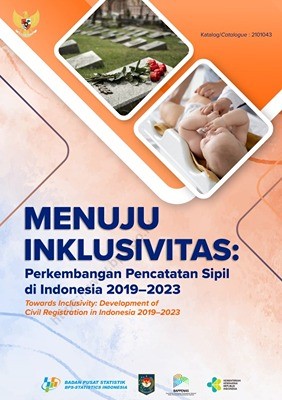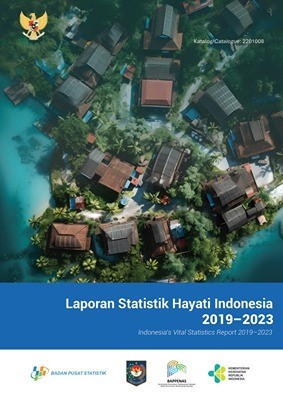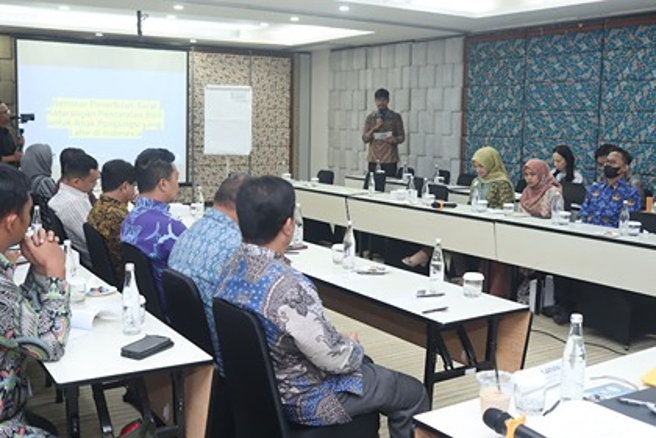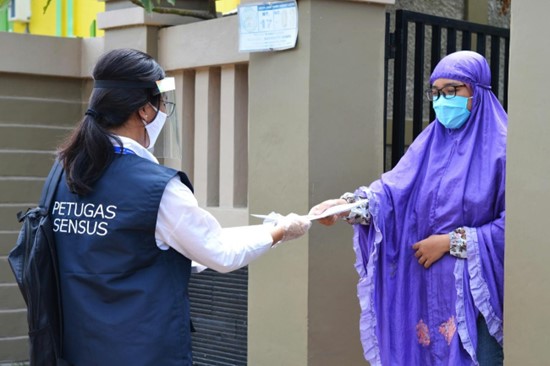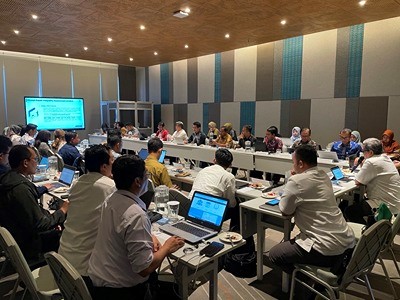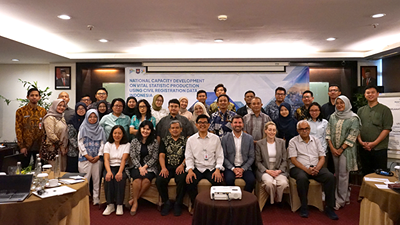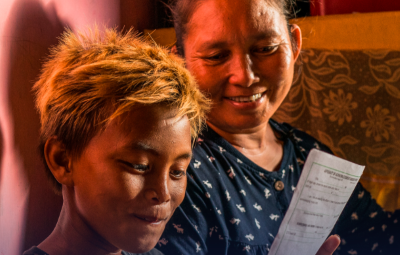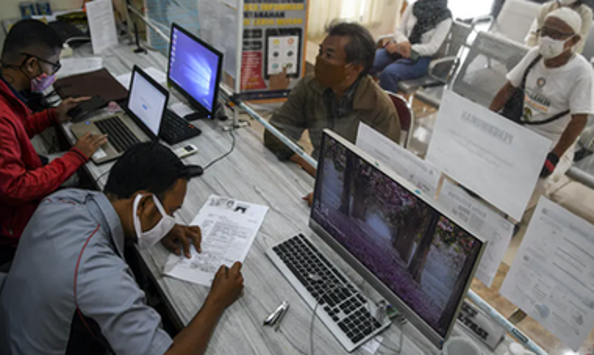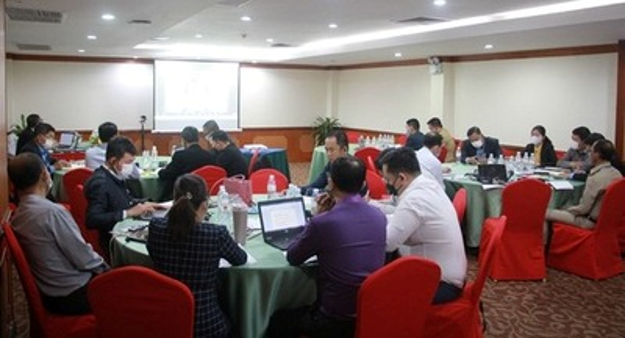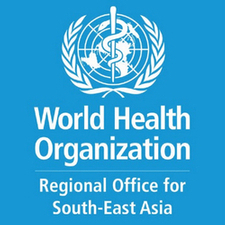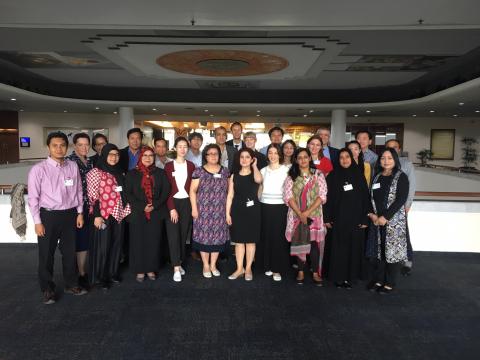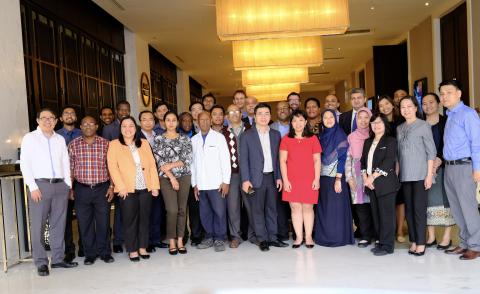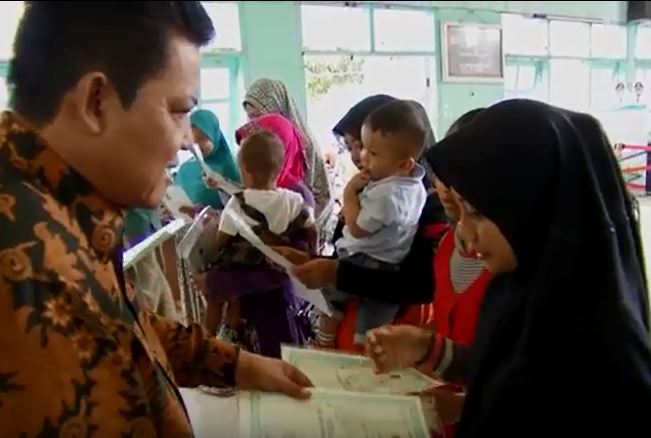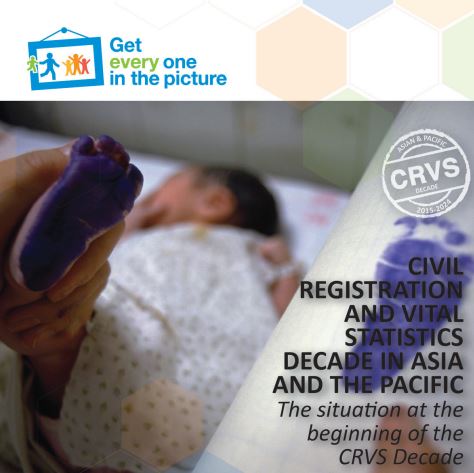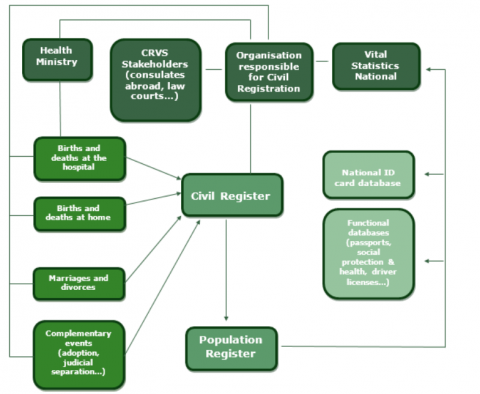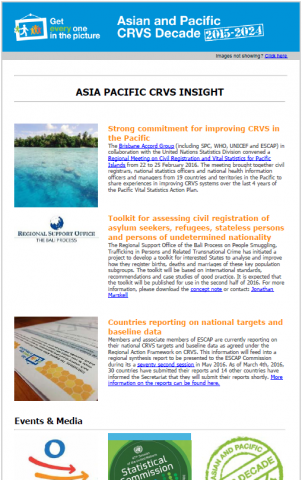The main authorities for CRVS in Indonesia are the Ministry of National Development Planning and Social Protection and the Ministry of Home Affairs.
Civil registration is integral to the Indonesian government’s current poverty-reduction strategy, both for its ability to confer legal identity to citizens and as the principal source of the country’s vital statistics.
In the last four years, there have been many developments in Indonesia aimed at removing the barriers that have contributed to many children not having a birth certificate. These initiatives have been led by the President, Parliament, Ministries and the Supreme and Constitutional Courts of Indonesia. In 2016, the Minister for Home Affairs issued a Ministerial Regulation covering the Child ID Card, that aims to protect and fulfill the constitutional rights of citizens. In order to obtain a child ID card, the parents must produce the child’s birth certificate and the family and ID cards of the parents or guardians. Also, the Minister for Home Affairs issued a Circular to all Provincial Governors and City Mayors and requested them to accelerate services for the recording and the publication of electronic ID cards and birth certificates.
The adoption of advanced technologies such as SIAK (Population Administration Information System) has been central to the current improvement of civil registration service provision. However, the success of these initiatives has been moderated by the lack of necessary facilities and equipment, internet connectivity, and human resources capability at the district and sub-district levels (Back to What Counts: Birth and Death in Indonesia, Center on Child Protection Universitas Indonesia (PUSKAPA), 2016).
Mr. Muhammad Cholifihani, Director of Population and Social Security, Ministry of National Development Planning/National Development Planning Agency (BAPPENAS)
Mr. Muhammad Cholifihani, Director of Population and Social Security, Ministry of National Development Planning/National Development Planning Agency (BAPPENAS)
Goal 1. Universal civil registration of births, deaths and other vital events |
Goal 1 Targets:
Goal 2. All individuals are provided with legal documentation of civil registration of births, deaths and other vital events, as necessary, to claim identity, civil status and ensuing rights |
Goal 2 Targets:
Goal 3. Accurate, complete and timely vital statistics (including on causes of death) are produced based on registration records and are disseminated |
Goal 3 Targets:
Goal 1. Universal civil registration of births, deaths and other vital events |
Goal 1 is an expression of the internationally accepted principle of the universal coverage of civil registration. The CRVS system should register all vital events occurring in the territory and jurisdiction of the country or area, including among hard-to-reach and marginalized populations.
National Targets:
TARGET
202490%
MIDTERM
201871.9%
TARGET
202495%
baseline
201745%
MIDTERM
201850%
Goal 2. All individuals are provided with legal documentation of civil registration of births, deaths and other vital events, as necessary, to claim identity, civil status and ensuing rights |
Goal 2 reflects that CRVS systems provide legal documentation of civil registration to individuals and families for legal and administrative purposes. Legal documentation is strongly linked with a broad range of rights and activities, in particular legal identity. This goal addresses the distinction between the civil registration of a vital event and the possession of formal proof that it took place, in the form of legal documentation.
National Targets:
baseline
2014100%
TARGET
2024100%
baseline
2014100%
TARGET
2024100%
Goal 3. Accurate, complete and timely vital statistics (including on causes of death) are produced based on registration records and are disseminated |
Goal 3 highlights the critical importance of civil registration being linked to the production and quality assurance of vital statistics on the occurrence and characteristics of vital events.
National Targets:
TARGET
2017
Note: This target was not monitored as part of the Midterm Questionnaire on the Implementation of the Regional Action Framework for CRVS in Asia and the Pacific.
baseline
201740%
MIDTERM
201835%
Note: In light of recent countries’ experiences, Verbal autopsy is not encouraged to be applied to a large population scale, but rather on a representative sample. To reflect this, Target 3E is not anymore monitored by the coverage percentage of Verbal autopsy, but by the use or not of Verbal autopsy and its different applications.
MIDTERM
Yes
TARGET
2020
TARGET
2024

National Coordination Mechanism
Status in Indonesia: Complete

Comprehensive Assessment
Status in Indonesia: Complete

National Targets for 2024
Status in Indonesia: Complete

Monitoring & Reporting Plan
Status in Indonesia: No data

Inequality Assessment
Status in Indonesia: Complete

National Strategy
Status in Indonesia: Complete

National Focal Point
Status in Indonesia: Complete

Reporting to ESCAP - Baseline
Status in Indonesia: Complete

Reporting to ESCAP - Midterm
Status in Indonesia: Complete


